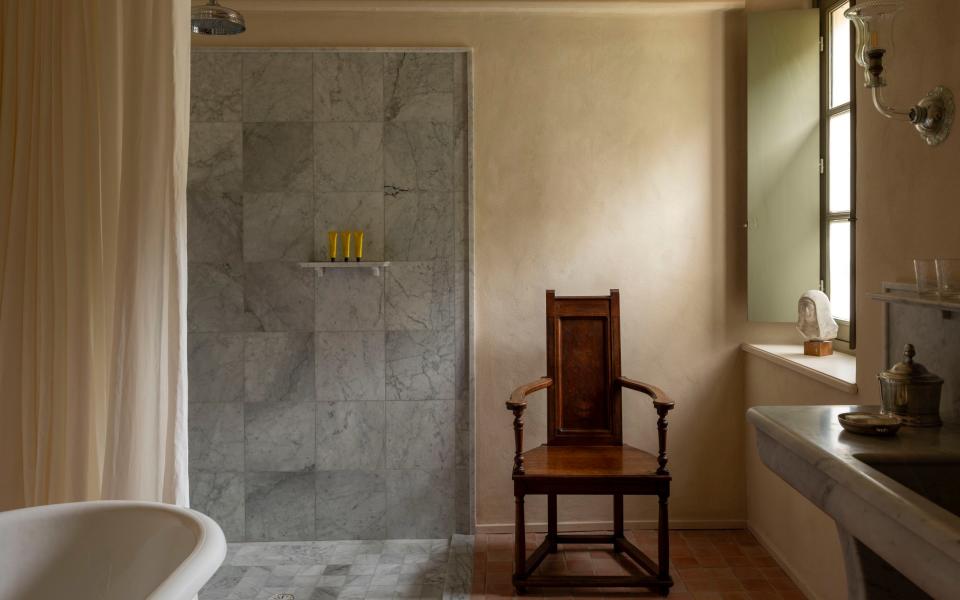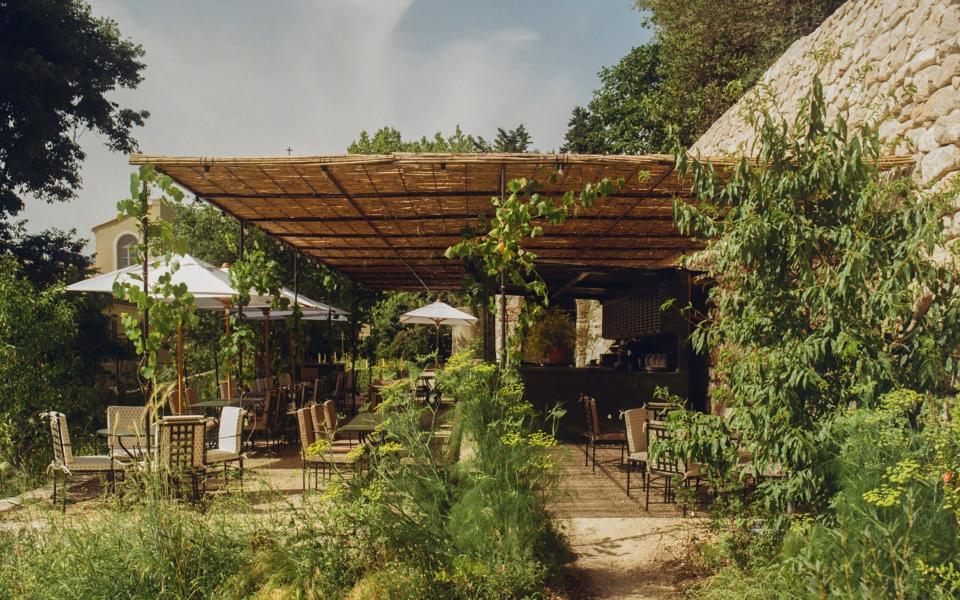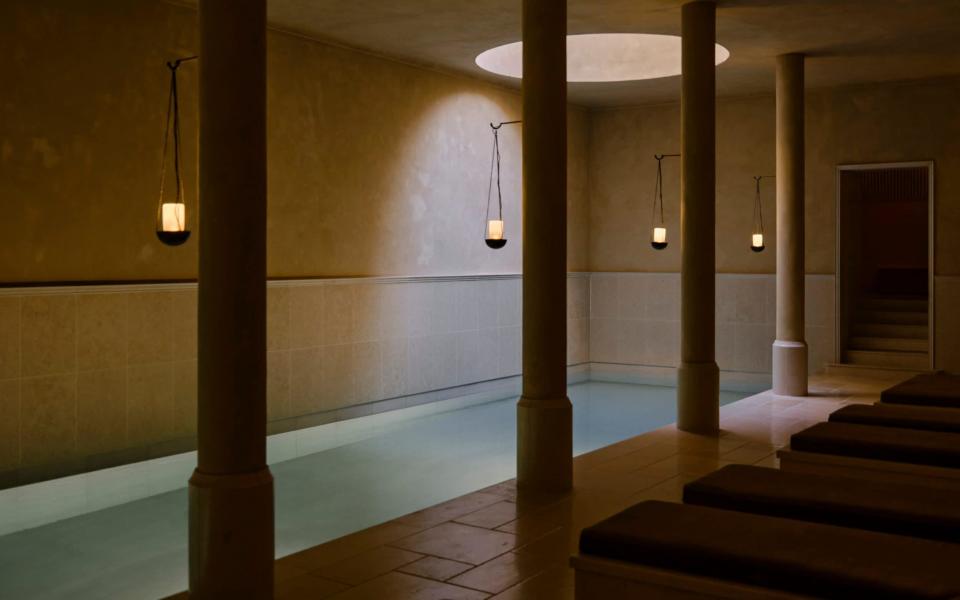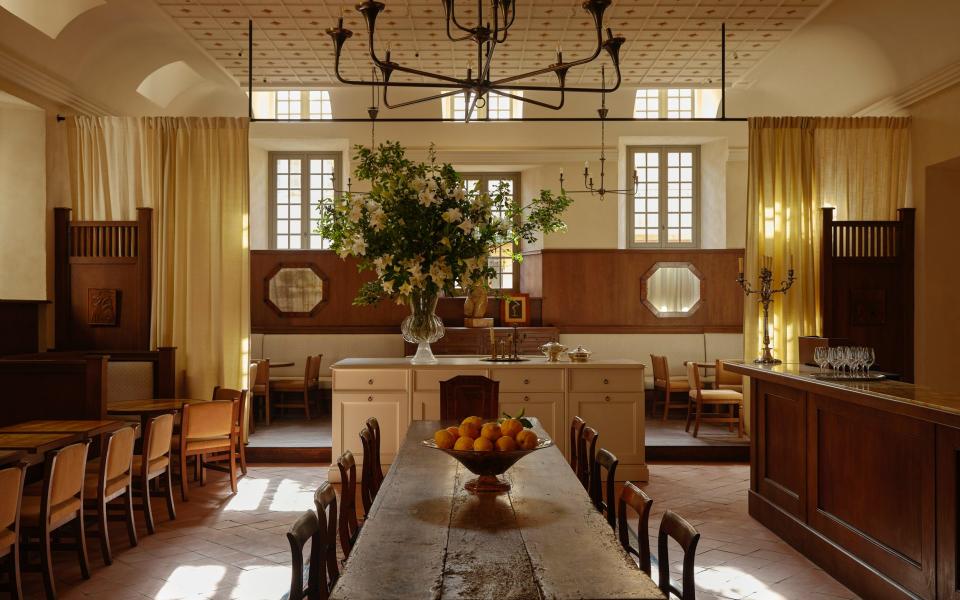Nice has been short of truly great places to stay – until now

Here are three questions. Can a single hotel change travellers’ perception of a destination? Do repurposed buildings – banks, department stores, prisons, offices, breweries, train stations – ever really work as places of hospitality, radiating heart and soul? And would you consider Nice as a destination for a spoiling short break?
Let me answer my own questions in order. 1) Rarely. 2) Very rarely. 3) Not until now, as long as I can stay at the new Hôtel du Couvent, and not just in summer – remember that Nice was made fashionable in the late 19th century by Queen Victoria as a winter resort.
The repurposed, 88-bedroom Hôtel du Couvent, opened in June in the heart of Vieux Nice, is one of those rarities. A former nunnery, it works wonderfully as a hotel in this beautiful varied city of art, a heady mix of French and Italian character, architecture and food set between the sea and the mountains.
The hotel already feels part of the fabric of the city, an oasis of peace and authenticity whose presence will help to lift Nice, in the eyes of discerning travellers, from gateway to the Côte d’Azur to a sought-after destination.

Already in the spotlight thanks to the finish of this year’s Tour de France there and its role as Olympic host for football, the city has seen a slew of new restaurants and hotels (the vibrant Mama Shelter with its popular rooftop bar and boutique Palais Ségurane to name two, as well as the recent much-praised revamp of the legendary Hotel Le Negresco).
It’s taken 10 years, £85 million and a proven hospitality disruptor with a pirate’s gold earring and tattooed arms to create Hôtel du Couvent. It’s hard to think of anyone other than Valérie Grégo with the necessary vision, lightness of touch and commitment to the Niçoise who could have done better for the 1604 building, last occupied in 1985. “It’s time for a new journey in the world of luxury travel,” he says.
What does that mean for an abandoned convent, tucked under the steep Colline du Château in the old town with its narrow streets and famous flower and food markets?
It means that the restoration and transformation has been executed with a rigour that one rarely sees. It means that the architect, Valérie’s brother Louis-Antoine Grégo, tracked down the last remaining nun, more than 90 years old, and her boxful of faded photographs of the Couvent de la Visitation before she and a dwindling group of fellow nuns finally left.
It means that the interior designers Charlotte de Tonnac and Hugo Sauzay, partners in life as well as work, have played on the tension between emptiness (as in the wide limestone floor corridors) and comfort (as in, behind cell-like doors, soothing bedrooms and suites that reprise original materials and colours).

Small contemplative paintings are hung close to the light of windows as the nuns had them; wooden furniture mixes with natural linens; ceiling lampshades are made of plaster so you hardly notice them; vases spill with natural flowers. “We have tried our best to tread lightly, to treat this building with respect,” says Grégo.
It also means that the new terraced gardens that climb to the lap pool above the hotel feel completely natural, with arbours of fennel, climbing beans and wild peas mixed with jasmine and roses.
Designed by Tom Stuart-Smith, laid out by James Basson and tended on the principles of permaculture, they fooled me at first.
Just as initially I thought the hotel too plain, then fell for its sense of thoughtful, scholarly calm (there is also an art library centred on the École de Nice movement), so I was at first puzzled by the jumble of herb, vegetable, fruit and weed-filled borders.
“They are not weeds,” the head gardener told me firmly, “they are spontaneous vegetation, needed to feed and shade the soil. If you look, they are beautiful.”

A group of women built this convent and for nearly 500 years sustained themselves within its walls. With this garden and the creation of a fruit, vegetable and poultry farm in the hills above the city (which guests can visit for picnic lunches) Grégo aims to do the same for the hotel.
Walk into the Hôtel du Couvent and you find yourself in a huge tree-shaded courtyard, much like a town piazza. A public farmers’ market is held here on Saturdays, while in the hotel’s street-facing bistro (there’s also an indoor/outdoor restaurant in the old refectory and a poolside guinguette in the gardens) the plat du jour is offered at a sliding from/to price, in the hope that locals will pay the least and hotel guests the most.
“Maybe it’s an experiment that will work, maybe not. We will see.” Not for nothing did Grégo study philosophy at university; not for nothing are Proustian madeleines served to every arriving guest; not for nothing are there opera librettos, play scripts and early editions of French novels in the bedrooms.
Just as the nuns needed to sustain themselves intellectually as well as bodily, so do we, and that includes time spent in the spa, a subterranean complex of Roman baths.

As well as feeding themselves, the nuns also needed to heal themselves. Hence, in the courtyard, next to the hotel’s bakery, where the original bread oven was found, guests will find an old-fashioned apothecary, its walls lined with wooden drawers, created for Niçoise herbalist Gregory Unrein, who is on hand for consultations each afternoon. The special tisane he mixed for me immediately cured my sore throat.
Like Valérie Grégo, I’ve always believed that hotels can have a positive or a negative effect on the community around them and on the people who stay in them, depending on how they are conceived and for what purpose.

If I’m right, then both the people of Nice and the people lucky enough to stay at the Hôtel du Couvent will be the richer for its mindful conversion from a religious sanctuary to one of luxurious modern hospitality.
Nice now has the contemporary hotel, right at its heart, that it richly deserves.
Fiona Duncan was a guest of Hôtel du Couvent (00 33 4 12 05 55 60; hotelducouvent.com), which offers doubles from £363, B&B. Scott Dunn (scottdunn.com) offers three nights at the Hôtel du Couvent in a double room, including return flights, from £1,100 per person, including breakfast.


